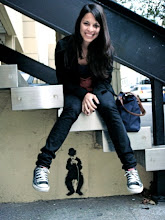
In my previous notes on Boyle, I talked about my curiosity to discover weather or not a larger budget had spoiled the creative spark of the team that brought us Shallow Grave and Trainspotting. Sadly it did, and I have the impression that such decay might have worsen with The Beach. So far, it looks like Boyle and his team need restrictions and pressure for their ingenuity to shine through. The $12 million budget made them forget that less tends to be more, and thus it looks like they tried really hard to spend every penny of their budget. They included cheesy special effects, over the top locations, car chases, guns, fights, bits of musicals, and lets not forget the closing sequence with cartoons providing the most archetypical happy ending that Hollywood could conceive.
During the scene in which Lily breaks up with Robert and he goes back to his apartment, I thought that Boyle’s style was finally shinning through the cracks. As Robert enters his apartment building, the camera, at an extremely high angle, shows the angular staircase lit by a dark red light that creates hunting shadows. Once inside the room, Robert sits in the bed, looks into the camera, and falls backwards as the camera moves to capture him from above the bed. If this kind of camera movement and lighting were persistent throughout the film, the larger budget would have been justified. However, the scene that follows this one is an example of the extravaganzas in which the team preferred to allocate their budget: a tacky computer-animated heart that brakes into pieces. Boyle and his team were criticized for having cut scenes that “would have made [the film] have sense” (47). I wonder what happened with this one. It might have slipped their minds or, because they were catering to an American audience, they assumed there would be no success without special effects. What a shame.
In one of his interviews, Boyle states that “you have three minutes to announce your intentions, to make an indelible stamp on the audience” (40). He is right, I can assure you that after only seen the opening scene of A Life Less Ordinary we could have come to the sound conclusion that it is nothing like its antecedents. The overexposed white police station, filled with policemen, nurses, prostitutes, and social workers, was supposed to convey the idea of a nuance paradise. Well, it didn’t. However, the cherry on top of the cake was the music. A cheesy and over the top song invaded the screen in such a high degree that one of the prostitutes lip-sings part of the song. Maybe this was a small premonitory shot of the dreadful musical sequence at the karaoke bar. The camera was steady and traditional, as if we were watching an ordinary Hollywood film from the late eighties. And, as soon as the actors opened their mouths, a highly dramatized and somewhat theatrical acting style was enforced. I felt like every small detail I enjoyed from Shallow Grave and Trainspotting was bleached out in this film. There was no exciting editing, original story, innovative camera angles, or clever acting.
